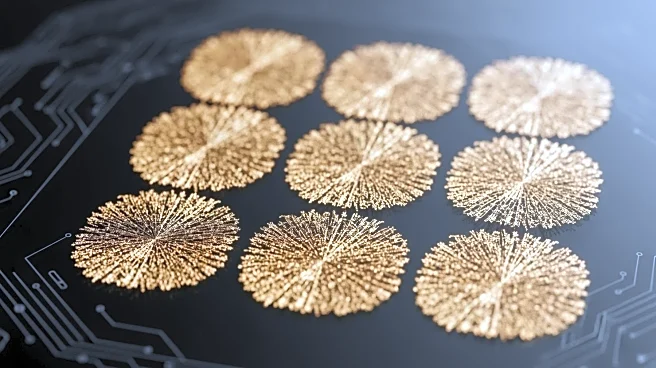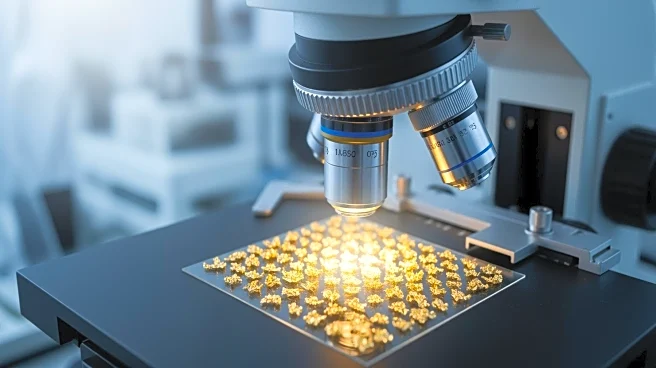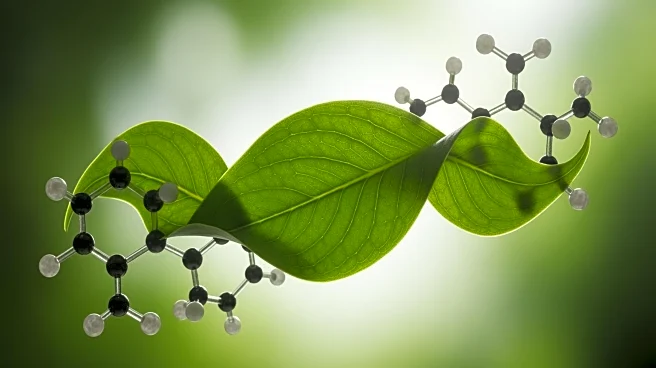What's Happening?
Researchers at Chalmers University of Technology in Sweden have developed a novel platform to observe fundamental forces at the nanoscale using gold flakes suspended in a salt solution. This platform allows
scientists to visualize 'nature's invisible glue,' which binds objects together at the smallest scales. By placing a drop of the solution on a gold-coated glass plate under an optical microscope, the gold flakes are drawn toward the surface, creating nanometer-sized cavities that trap light and produce colorful patterns. This setup enables the study of the Casimir effect, an attractive force, and the electrostatic force, which prevents the flakes from sticking completely. The platform, developed in collaboration with the University of Illinois, offers insights into self-assembly processes and could have applications in various scientific fields, including physics, chemistry, and materials science.
Why It's Important?
The development of this platform is significant as it provides a new method to study fundamental forces and material properties at the nanoscale. Understanding these forces can lead to advancements in controlling self-assembly processes, which are crucial for the development of new materials and technologies. The ability to observe and measure these forces without sophisticated instruments opens up possibilities for research in areas such as medicine, biosensors, and water filtration. Additionally, insights gained from this platform could contribute to understanding larger-scale phenomena, such as galaxy formation, by applying the same principles observed at the nanoscale.
What's Next?
The researchers plan to further explore the potential applications of this platform in various scientific fields. They aim to study the interactions of individual particles in liquids, which could lead to advancements in medicine delivery systems and the development of effective biosensors. The platform's ability to measure forces at the particle level may also provide new insights into the stability and behavior of everyday products, such as cosmetics. Continued research could enhance the understanding of self-assembly processes and lead to innovations in material science.
Beyond the Headlines
The platform developed by Chalmers University researchers highlights the importance of interdisciplinary collaboration in scientific research. By combining expertise in physics, chemistry, and materials science, the team has created a tool that not only advances fundamental understanding but also has practical applications. This approach underscores the potential for scientific breakthroughs when researchers from different fields work together to solve complex problems.











